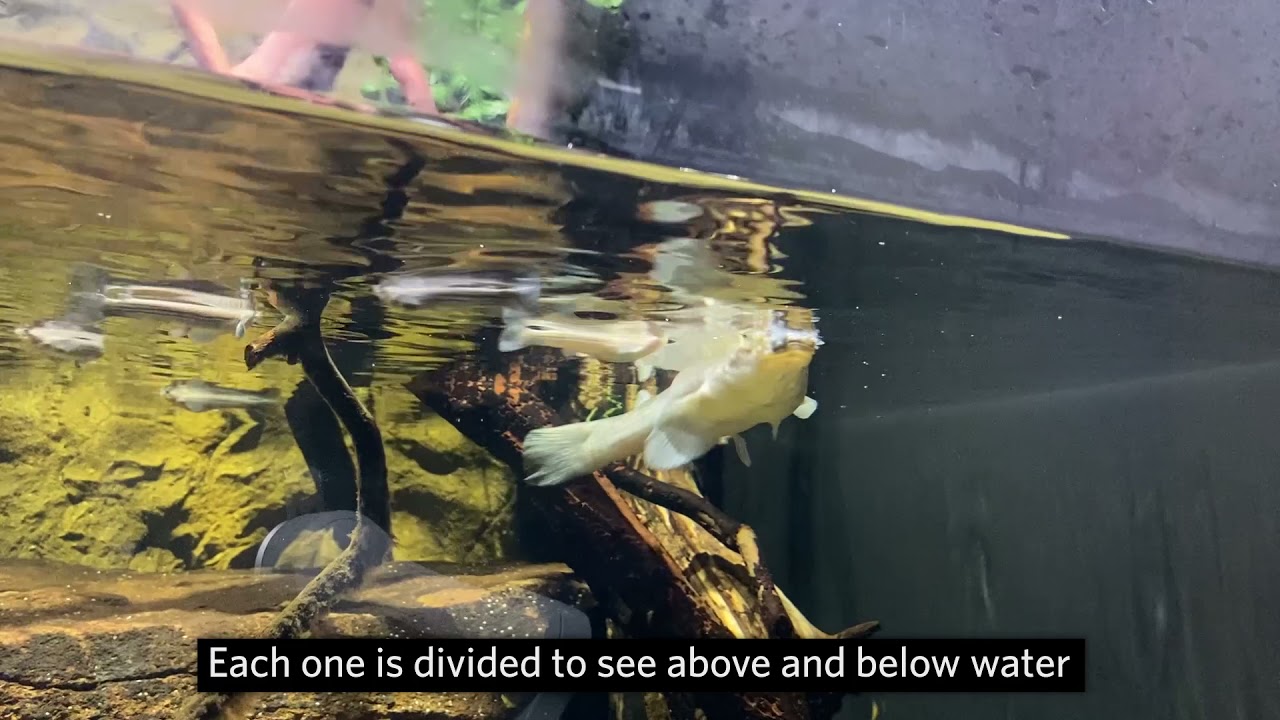Summary:
– Introduction to the Four-eyed Fish and its unique features
– Adaptation of the Four-eyed Fish to its South American mangrove forest habitat
– Overview of the reproduction and parenting behavior of the Four-eyed Fish
– Importance of conservation efforts in preserving the natural habitats of the Four-eyed Fish
Have you ever heard of a fish with no two but four eyes? It may sound like something from a science fiction movie, but the four-eyed fish (Anableps anableps) is a real and fascinating creature. With its bulging, orb-like eyes that can simultaneously see above and below the waterline, this fish is uniquely adapted to its South American mangrove forest habitat. Today, we will delve into the world of the four-eyed fish and discover what makes it so special.
Let’s start by exploring the four-eyed fish’s incredible adaptation to its environment. While most fish have eyes on the sides of their heads, the four-eyed fish takes it a step further with eyes on the top. These eyes are divided into two parts: the upper half, which is adapted for vision above the water, and the lower half, which is adapted for vision below the water. This adaptation allows the fish to hunt for prey above the surface while watching for predators below.
The four-eyed fish primarily inhabits the mangrove forests of South America, where the water is often murky and filled with vegetation. Its unique eyesight enables it to navigate through this challenging environment with ease. The upper half of its eyes has a large cornea and lens, similar to those of terrestrial animals, that allow it to focus on objects above the waterline. Meanwhile, the lower half is equipped with a special tapetum lucidum layer, which enhances its vision underwater in low light conditions. This remarkable adaptation gives the four-eyed fish a significant advantage over other fish species.
Now, let’s shift our focus to the reproductive behavior of the four-eyed fish. One of this species’ most intriguing aspects is its reproduction method. Unlike many other fish, the four-eyed fish is live-bearing, giving birth to live offspring rather than laying eggs. Even more remarkable is that the females possess two separate reproductive organs. This allows them to store sperm from multiple males, resulting in a mix of paternal genes in each brood.
During mating, the males put on an impressive display to attract females. They engage in elaborate courtship rituals, including flashing their brightly colored bodies and displaying their anal fins. Once a female is ready to mate, she selects a male and positions herself next to him. The male will then release a package of sperm called a gonopodium, which the female must capture with her specialized reproductive organs. This unique reproductive system ensures genetic diversity within the population and increases the chances of survival for the offspring.
In a heartwarming twist, the female four-eyed fish exhibits remarkable parental care after giving birth. She will guard her newborns and actively protect them from predators. If disturbed, she will gather her offspring in her mouth and swim away to a safer location. The babies, known as fry, are born fully developed and can swim minutes after birth. They are tiny replicas of their parents, complete with the distinct bulging eyes that characterize the species.
Unfortunately, like many other species, the four-eyed fish faces threats to its survival—habitat destruction, pollution, and overfishing all put this unique creature at risk. Conservation efforts are crucial to protect the mangrove forests that serve as its home. Preserving these habitats ensures the survival of the four-eyed fish and contributes to the ecosystem’s overall biodiversity.
As we wrap up our exploration of the four-eyed fish, let’s take a moment to appreciate the wonders of the natural world. The diversity of life on our planet never ceases to amaze and inspire, and the four-eyed fish is a perfect example of nature’s incredible adaptations. Let us all strive to protect and regenerate our environment so that future generations can continue to marvel at the beauty and uniqueness of species like the four-eyed fish.
Remember, supporting organizations like the California Academy of Sciences is vital in preserving our planet’s ecological balance. Together, we can make a difference and ensure a brighter future for all living creatures.
– – –
Support the California Academy of Sciences in their mission to regenerate the natural world: https://bit.ly/3o0ZTqB. Regardless of size, your contribution can help tackle our planet’s ecological crisis. Thank you for joining us in this important endeavor.
Connect with the California Academy of Sciences:
• Facebook: https://facebook.com/calacademy
• Twitter: https://twitter.com/calacademy
• Instagram: https://instagram.com/calacademy
*****
Source Description
With its bulging, orb-like eyes that can simultaneously see above and below the waterline, the four-eyed fish (Anableps anableps) is uniquely adapted to its South American mangrove forest habitat. Get to know this unusual species—and meet 17 Anableps newborns!
https://www.calacademy.org/learn-explore/creature-closeups/four-eyed-fish
– – –
🙌 Now, More Than Ever, We Need Your Support.
Please help us tackle our planet’s ecological crisis and regenerate the natural world: https://bit.ly/3o0ZTqB. We’re grateful for contributions of any size. Thank you!
– – –
The California Academy of Sciences is a renowned scientific and educational institution dedicated to regenerating the natural world through science, learning, and collaboration. Based in San Francisco’s Golden Gate Park, it’s the only place in the world to house an aquarium, planetarium, rainforest, and natural history museum—plus cutting-edge research programs—all under one living roof.
Connect with us:
• Facebook: https://facebook.com/calacademy
• Twitter: https://twitter.com/calacademy
• Instagram: https://instagram.com/calacademy


